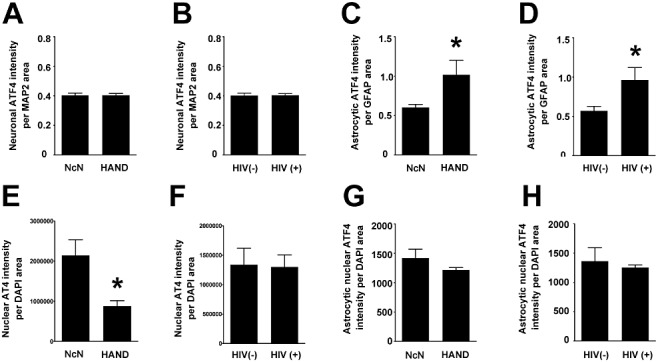Figure 8.

While total nuclear ATF4 protein levels parallel total ATF4 protein levels, cytoplasmic neuronal ATF4 and nuclear astrocytic ATF4 do not change with disease state and cytoplasmic astrocytic ATF4 increases in both HAND and HIV(+) tissue compared with neurocognitively normal and HIV(−) tissue, respectively. Using Metamorph 6.0 software, total integrated pixel intensity of ATF4 was quantified and colocalization with cell‐type markers was determined and normalized to area of cell‐type marker to account for losses of marker protein due to disease. (A and B) Neuronal cytoplasmic ATF4 does not change with disease state. (C and D) ATF4 in the cytoplasm of astrocytes increases in both HAND cases and HIV(+) cases when compared to neurocognitively normal and HIV(−) cases, respectively. (E and F) Total nuclear ATF4 protein levels decrease in HAND cases over neurocognitively normal cases, but do not change in HIV(+) cases over that seen in HIV(−) cases. (G and H) Astrocytic nuclear ATF4 levels do not change in either HAND or HIV(+) cases when compared to neurocognitively normal or HIV(−) cases, respectively. Values are shown as mean ± SEM. Student's t‐test and Mann–Whitney U post‐hoc analysis was used for statistical analysis to determine significance. *P < 0.05, compared with control.
